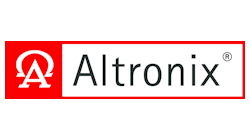With the increasing demand for data, there is no argument that remotely monitoring and reporting power diagnostics over the network is critical to keep systems running smoothly — which provides an added level of security.
Offering new features and benefits, these new solutions provide critical information with the ability to detect potential system failures in advance, so preventive measures can be taken. This not only provides a potential source for new Recurring Monthly Revenue (RMR), it increases overall security — helping to ensure that all systems are operating at optimal levels.
Power systems have far-reaching effects beyond security. The fact is that surveillance and access control systems are being implemented for far more than conventional security applications these days. The data points generated by these systems are commonly being used by various other business entities. Examples include: surveillance cameras monitoring retail traffic and activity for increased efficiency; using access control credentials for time and attendance; asset tracking; and to access secured networks and data. With current technology, the possibilities are endless.
The implementation to achieve this usability requires a variety of hardware and software on an integrated platform. For example, megapixel cameras with HD resolution and extended wide area coverage combined with VMS systems to process complex analytics such as facial and license plate recognition — plus video storage with petabytes of capacity and access control systems. Together, they deliver advanced functionality beyond conventional security.
Benefits of Power Monitoring
All of the products mentioned rely on one critical aspect of system operation: power. If the power goes down, nothing works and security is compromised.
In many cases, the power supply is not the issue. In certain cases, the connected device simply fails. By monitoring power supply/ battery diagnostics, it is possible to determine problems remotely, which can greatly reduce or even eliminate field service calls while increasing profitability. Additionally, should a service call be required, remote monitoring and diagnostics will help ensure that the problem was rectified quickly and efficiently.
What kind of information can we glean from monitoring power? Here are just a few examples of the types of diagnostics, control and thresholds that can now be realized:
- AC Status – indicates high voltage presence or lack of, and verifies that the system is not operating on battery back-up;
- Battery Status – verifies that there is back-up battery presence and that they are in proper working order;
- Battery Health – indicates that the power supply’s back-up batteries are charging or discharging, and reports battery voltage;
- Battery Service Settings – programmed by a technician to send alerts when back-up batteries need to be tested and/or replaced;
- Voltage Output – indicates that proper voltage is being provided by the power supply with programmable high/low thresholds for individual devices;
- Current Load – indicates how much power each individually connected device is consuming with programmable high/low thresholds which can indicate if a device is about to fail; and
- Ambient Temperature – measures the temperature inside of an enclosure to ensure that the power supply is operating under acceptable environmental conditions.
These types of data points provide invaluable information to help ensure system integrity, and provide a new source of RMR.
Finding RMR
Here are how networked power supplies can contribute to a service business model’s bottom line:
For Customers Without a Service Contract: In the event a service call is required, servicing dealers and integrators respond on a case-by-case basis and typically charge the customer a set minimum fee. By having the ability to monitor power systems remotely, the servicing technician can diagnose the issue and quickly take action to fix or prevent a failure. Imagine charging a two-hour minimum for a service call, and because of quick diagnostics, the technician only needed to spend less than an hour at the job site. This will ensure higher customer satisfaction and better management of your company’s time and resources.
A Preventative Maintenance Contract is in Place: In this situation, service is provided on a regularly scheduled basis to perform maintenance functions such as replacing batteries, cleaning camera domes and lenses, inspecting panel wiring, etc. By adding the power monitoring feature, these contracts can be expanded to include additional services and assurances at higher fees.
A Full Service Contract is in Place: With a full service contract in effect, notification of potential issues provides the servicing dealer with vital information they need to quickly correct a problem, or prevent it from even occurring. In these situations, the goal is to spend the least amount of time necessary on site. Information provided from networked power supplies can greatly assist in achieving this goal.
The most successful integrators/dealers provide stellar customer service, high quality products and installations which equate to reliable system operation. By adding network communications to power supplies at the core of every security system, dealers and integrators can improve overall customer satisfaction, and increase their revenue streams simultaneously.
Ronnie Pennington is National Accounts Manager for Altronix. Request more info about the company at www.securityinfowatch.com/10212790.



